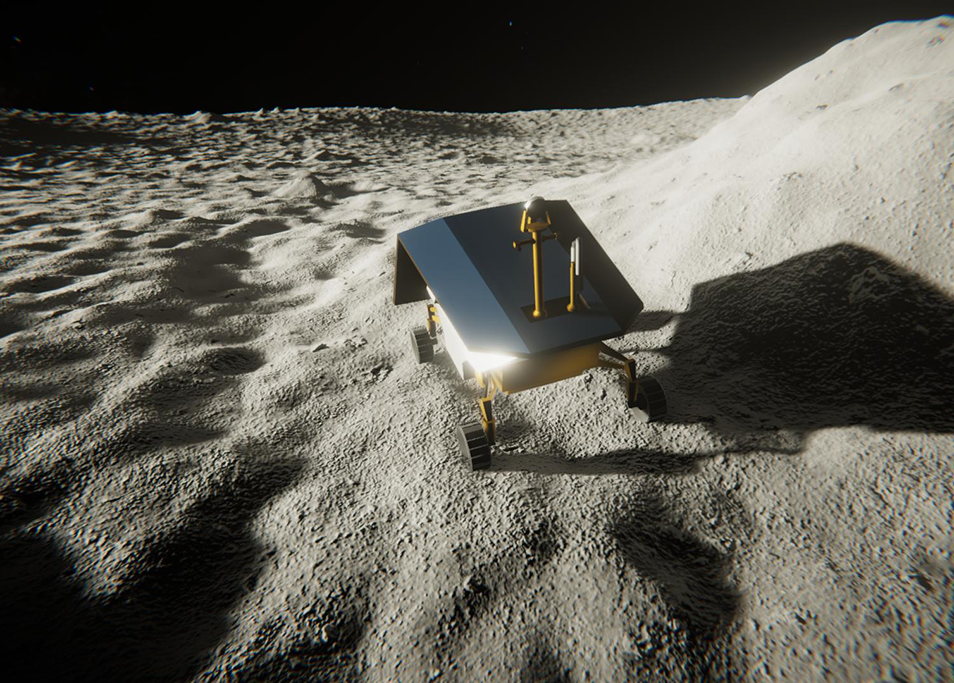
Lunar ice? It could be the commodity we need to get us to Mars.
The Moon will once again play a crucial role in the space race. But, this time, as a giant link in the planetary supply chain.
Water and fuel are two important assets for astronauts on a journey to Mars. So, what happens if astronauts need to refill while they’re away from home?
Ice deposits found in shadowed craters near the poles can act as resource wells for visiting astronauts. These ice deposits can provide drinking water for humans and crops, and are the key component needed to create rocket fuel.
By manufacturing propellant on the Moon, traversing space could become like a long-haul flight. A stopover on the moon to refuel and rest, before continuing to your final destination of Mars.
For this to be possible, astronauts need data. They need to know where to find these deposits and how far under the surface they’re located. Along with an understanding of their chemical composition and the equipment needed to extract them.
Finding and obtaining lunar ice
Researchers from Data61 are generating detailed interactive maps to identify the most likely places to find ice reserves on the moon. And, it’s all with the help of predictive analytics and data science.
Computational modelling research scientist and project lead Dr Craig Lindley says it’s a matter of bringing it all together.
“By layering this data, we’ve created a virtual map. It contains 2D and 3D interactive models showing where ice deposits on the moon can be found,” he said.
“Insights from the data have shown strong evidence that ice is present and possibly exposed on the lunar surface in many permanently shadowed regions such as deep craters in the north and south poles.”
Our next steps to Mars
The project could be a key part of the NASA Moon to Mars initiative. With the team using data gathered by NASA’s Lunar Reconnaissance Orbiter to create a prototype space resources data platform. Resources like frameworks for generating 3D material models for asteroids and planetary surfaces will be crucial.
While Earth’s nearest celestial neighbour is the current focus, the system has also been applied to asteroids and can be used for other planets.
With the recent news there may be life in Venus’s harsh atmosphere, the need to ensure space travellers are as well-prepared as possible to venture into the most challenging conditions known to humankind are crucial next steps as we prepare to explore beyond the moon.
CSIRO’s Data61 is working in collaboration with the Australian Centre for Space Engineering Research (ACSER) at UNSW, the Space Science and Technology Centre and School of Earth and Planetary Sciences at Curtin University, the Centre for Astrophysics at USQ, HEO Robotics P/L, and NEO Resource Atlas P/L (NEORA).
For the full version of this article head on over to our Algorithm blog.

